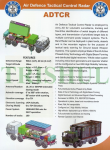Nothing to do with LDRE. It was done by IISc. But it goes on to show that semi-conductor research is really getting to world class levels in the country. We are already at levels where a few countrues can match/outdo us.
IISc faculty change game with India's first e-mode gallium-nitrade power transistor - Times of India
Infrastructure | Centre for Nano Science and Engineering (CeNSE), IISc
IISc faculty change game with India's first e-mode gallium-nitrade power transistor - Times of India
Infrastructure | Centre for Nano Science and Engineering (CeNSE), IISc








 I can't read that
I can't read that











